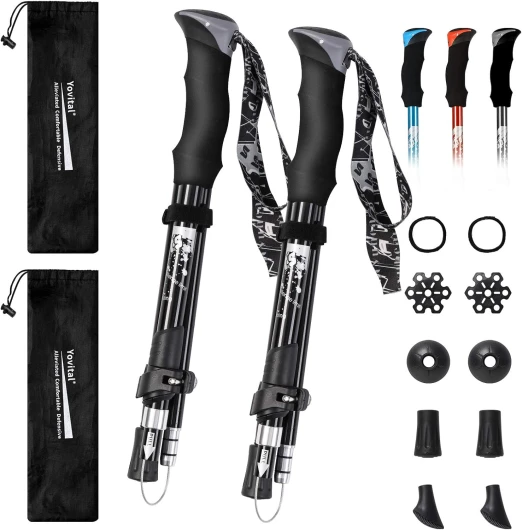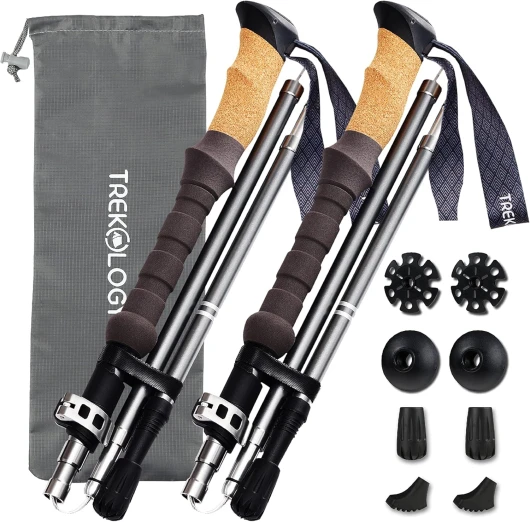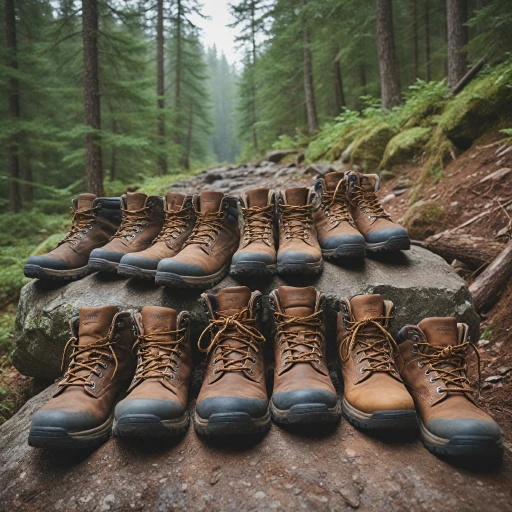
Understanding the Role of Hiking Stick Handles
The Essential Role of Handles in Your Hiking Gear
Understanding the importance of hiking stick handles is fundamental for any outdoor enthusiast. Often underestimated, the handle of your hiking stick or trekking poles is not just a simple attachment but a critical component of your hiking gear. A well-designed handle enhances grip, comfort, and functionality, especially during extended walking or trekking sessions. It's about finding the right balance between usability and comfort to ensure that your hiking sticks are an asset on every trail. When selecting your hiking poles, it's crucial to consider what type of handle works best for your walking style. The materials used in handles play a significant role in providing the grip and feel you need on different terrains. While some hikers may prefer foam for its absorbent properties, others might lean towards cork for its ergonomic comfort—a choice influenced by personal experience rather than any single mandated specification. Handles are more than just a part of the pole you hold onto; they are designed with ergonomic considerations to enhance your hiking experience. When talking about ergonomics, the fit and structure of the handle impact how comfortable it feels over long distances. Choosing a handle well-suited for your hand shape ensures a good connection between you and your pole, reducing fatigue and improving overall performance. Moreover, weather variations demand attention to handle design. As the conditions change, the grip on the pole may need to adjust, too. While some grip replacements can provide a solution, selecting initially versatile handles made for all conditions will keep your hikes secured against the elements. Ultimately, the right handle is about personal preference, much like the individual choice of hiking staff materials or trekking poles’ unit price adjustments to fit budget constraints. Whether you’re navigating rocky terrains or enjoying nordic walking, having a handle that complements your gear naturally enhances your outdoor journey. For more insights on how trekking poles can enhance your outdoor experiences, click to enhance your hunting experience with trekking poles.Materials Matter: Choosing the Right Handle
Selecting the Best Handle Material
When choosing the right hiking stick handle, you'll find that material plays a significant role in determining the overall quality and comfort of your walking gear. Not only does the handle impact your walking efficiency, but it also ensures that your hands remain comfortable during long treks with your trusty walking sticks or trekking poles. Material options vary significantly, each offering its unique benefits. Cork handles, for example, are often praised for their ability to mold to your hand shape over time, providing a customized grip. Cork is lightweight and absorbs sweat efficiently—ideal for those hot summer hikes. If you're venturing into wetter climates, rubber handles might be more your style. They are water-resistant and provide a firm grip even when wet, making them perfect companions for those misty or rainy hiking days. On the other hand, foam handle grips offer a soft touch, excellent for long hikes where comfort is crucial. Foam grips are known for their absorbing qualities and insulation against cold, great for wintry treks. While considering the material, it is essential to weigh the pros and cons, including the price and durability of each type. Materials like cork and foam may wear faster than rubber, necessitating grip replacements more frequently. It's also wise to explore user reviews and forums to gather diverse perspectives on hiking stick handle materials. For avid hikers looking to "maximize your hiking experience with a telescoping pole," don't overlook how seamlessly the handle material integrates with your trekking pole's overall design and functionality. This choice can drastically enhance the quality of your hiking adventures.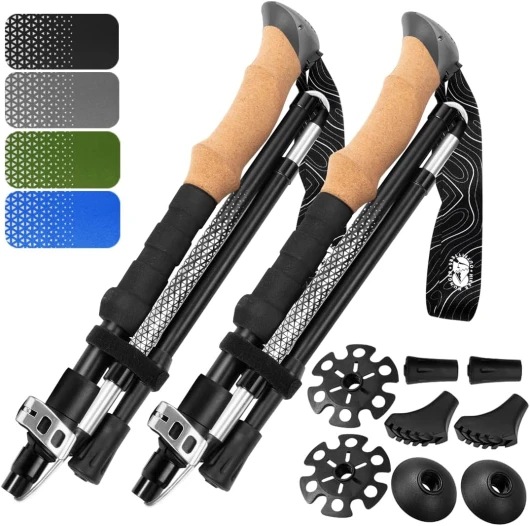
- + Adjustable size for different user heights
- + Lightweight design for easy carrying
- + Durable aircraft aluminum construction
- + Comfortable grips with real cork and EVA foam
- + Compact and foldable for easy storage
Ergonomics and Comfort: Handle Design
Designing for Comfort: The Ergonomic Edge
When it comes to hiking poles, the handle design plays a crucial role in ensuring comfort during long treks. A well-designed handle grip can make a significant difference in your hiking experience, reducing fatigue and enhancing control. The ergonomic design of a handle is not just about aesthetics; it’s about providing a comfortable and secure grip that aligns with the natural shape of your hand.
Many hikers often overlook the importance of a good handle grip, but it’s essential to consider how the design affects your overall comfort. A handle that fits well in your hand can prevent blisters and calluses, allowing you to enjoy your time on the trail without unnecessary discomfort. Some handles are designed with specific materials that offer a softer touch, while others provide a firmer grip for those who prefer a more solid feel.
Adjusting to Your Needs: Customizable Features
Some trekking poles come with adjustable handle grips, allowing you to modify the fit according to your hand size and preference. This feature can be particularly beneficial for those who share their hiking gear with other family members or friends. Additionally, some handles are equipped with tape or padding to enhance grip and reduce slippage, especially in wet conditions.
When selecting a hiking stick, consider the eco-friendly materials used in the handle design. These materials not only contribute to sustainability but also offer unique benefits in terms of grip and comfort. Whether you’re a fan of cork, foam, or rubber, each material has its own advantages that cater to different hiking styles and preferences.
Finding the Right Balance: Weight and Durability
The weight of the handle can also impact your hiking experience. Lighter handles are easier to carry over long distances, while heavier ones might offer more durability. It’s important to find a balance that suits your hiking needs. Consider the unit price and the longevity of the handle when making your choice. A handle that offers a good balance between weight and durability can be a worthwhile investment for avid hikers.
Ultimately, the right handle design will depend on your personal preferences and the specific conditions you plan to hike in. Whether you’re tackling rugged terrains or enjoying a leisurely walk, the right handle can enhance your hiking experience, making every step more enjoyable.
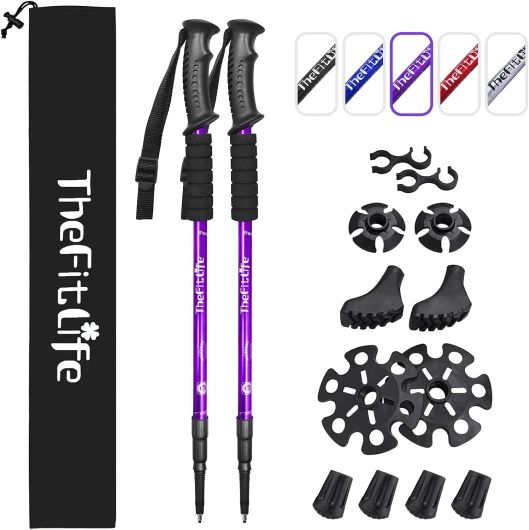
- + Anti-Shock feature for comfort
- + Quick Lock System for easy adjustments
- + Telescopic and collapsible design for portability
- + Ultralight for easier hiking and trekking
- + Versatile for hiking, camping, and walking
Weather Considerations: Handles for All Conditions
Adapting to Weather Conditions with the Right Handle
When it comes to hiking, the weather can be as unpredictable as the terrain. Choosing the right handle for your hiking stick or trekking poles can make a significant difference in comfort and performance. Whether you're navigating through rain, snow, or intense heat, the handle grip plays a crucial role in ensuring a secure hold.
In wet conditions, a handle with a non-slip grip is essential. Materials like rubber or cork are often recommended for their ability to maintain traction even when damp. Cork, in particular, is favored for its natural feel and moisture-wicking properties, making it a good choice for those who encounter varying weather conditions on their hikes.
For colder climates, consider a handle that provides insulation. Foam grips are popular among hikers for their ability to keep hands warm while offering a comfortable grip. They are also lightweight, which can be a bonus when you're carrying your gear over long distances.
On the other hand, if you're hiking in hot and sunny environments, a handle that remains cool to the touch is beneficial. Cork once again proves to be a versatile option, as it doesn't absorb heat as much as other materials. Additionally, some hikers prefer handles wrapped in breathable tape to enhance comfort and reduce sweat accumulation.
Ultimately, the best handle for your hiking poles will depend on your personal preferences and the specific conditions you anticipate facing. Engaging with online forums and reading verified purchase reviews can provide insights into what other experienced hikers have found effective. Remember, the right handle can transform your hiking experience, making it more enjoyable and less strenuous.
Maintenance and Care for Longevity
Care and Maintenance Tips for Longevity
Regular maintenance of your hiking stick handle is paramount to ensure it serves you well on various terrains. A well-cared-for walking stick can be a reliable member of your hiking gear for years.- Cleaning the Handle: Using a damp cloth, gently wipe off dirt and sweat from the handle after every hike. For tougher grime or sticky residue, a mild soap can be used but ensure the handle is thoroughly dried afterward.
- Inspection: Periodically check for any cracks or wear on the handle grip. Early detection of damage can save you from unexpected pole failures during treks.
- Grip Replacement: If you notice your pole grip wearing out, it’s time to look into replacement options. This will enhance both comfort and safety during use.
- Conditioning Materials: For handles made of cork or wood, consider using natural oil or conditioner to maintain the material. This prevents drying and cracking, keeping your grip in good condition.
- Storage: When not in use, store your trekking poles and hiking staff away from extreme temperatures and direct sunlight, which can degrade the materials over time.
- Handle Wrappings: Use handle tape for better grip if needed, especially if the original surface becomes slippery. This is particularly useful in wet or humid conditions.
Personal Preferences: Finding Your Perfect Fit
Finding the Handle That Complements Your Hike
Personal preferences play a pivotal role when it comes to selecting the right hiking stick handle. Whether you find solace in the familiarity of traditional wooden grips or prefer the innovative designs of ergonomic materials, the choice is ultimately yours. Consider the feedback from various forum discussions where fellow outdoor aficionados share their views on preferred walking sticks and trekking poles.
When choosing a handle, factors such as grip, comfort, and material come into play. The vast selection ranges from rubberized grips for wet conditions to cork handles that absorb sweat during intense hikes. Ergonomically designed grips serve as a good choice for ensuring comfort over an extended time.
Consider the type of trekking you plan to do. Are you engaging in nordic walking, traditional hiking, or seeking a multi-use hiking staff? Each activity might necessitate a specific kind of pole or stick design. Grip replacement options ensure longevity, offering a fresh start with minimal cost if wear and tear take their toll.
No two members of the hiking community have identical needs. Invest time in understanding your preferences—seek opinions and click expand on detailed reviews from trusted sources. It’s this personalized approach that shapes a truly tailored hiking experience, ensuring you are equipped with the gear that feels like an extension of your own hand. The right handle can make the difference between an enjoyable journey and not.

